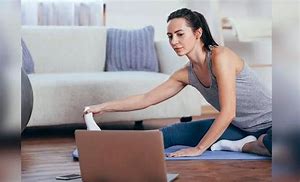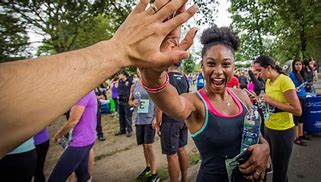Staying fit is a priority for many people, but not everyone has the time, money, or desire to join a gym. Fortunately, staying fit doesn’t require a gym membership or expensive equipment. Whether you are looking to lose weight, build muscle, or simply stay healthy, there are several effective ways to stay fit at home or outdoors. This blog will guide you through the right way to stay fit without the gym, offering practical and accessible suggestions for people of all ages.

1. Start with Bodyweight Exercises
One of the simplest and most effective ways to stay fit without a gym is by incorporating bodyweight exercises into your routine. These exercises don’t require any equipment and can be done anywhere – at home, in the park, or even in your office during a break.
Key bodyweight exercises include:
- Push-ups: Great for strengthening the upper body, especially the chest, shoulders, and triceps.
- Squats: Excellent for toning the lower body, including the legs and glutes.
- Planks: A fantastic core-strengthening exercise that also engages the arms, shoulders, and back.
- Lunges: Help build strength and stability in the legs and hips.
- Burpees: A full-body exercise that boosts cardiovascular fitness and works multiple muscle groups.
Incorporating these exercises into a routine, such as performing them in sets or circuits, can provide an effective full-body workout. Start with basic versions of these exercises and increase the difficulty as your fitness level improves.
2. Engage in Cardio Activities
Cardio exercises are essential for heart health and overall fitness. While many people associate cardio with machines like treadmills or bikes, you can achieve the same results through simple outdoor activities that get your heart rate up.
Great cardio activities that don’t require a gym include:
- Walking or Jogging: Walking is low-impact and great for all ages, while jogging helps increase cardiovascular endurance.
- Cycling: Whether on a stationary bike or a regular bike, cycling is a great way to burn calories and strengthen your legs.
- Dancing: Dancing is a fun and energetic way to work out. You can join a dance class or just move to your favorite music at home.
- Jump rope: This is an inexpensive and effective way to improve cardiovascular fitness and coordination.
The beauty of cardio is that you don’t need fancy equipment or a gym membership. You can enjoy a brisk walk in the park or even dance in your living room.
3. Focus on Flexibility and Mobility
Flexibility and mobility are often overlooked aspects of fitness, but they play a crucial role in maintaining overall health. A flexible body has a reduced risk of injury and improved range of motion. Stretching and mobility exercises can be done at home or anywhere and only require a little time each day.
Effective flexibility and mobility exercises include:
- Yoga: Yoga combines stretching, strength, and relaxation. It’s a great way to improve flexibility, reduce stress, and build a strong body. There are many free online resources available for beginners.
- Pilates: Similar to yoga, Pilates focuses on core strength, posture, and flexibility. It can be done at home using just a mat.
- Foam rolling: This self-massage technique helps improve flexibility and relieve muscle tightness by rolling on a foam roller.
Including a combination of yoga or Pilates along with basic stretches for key muscle groups (like hamstrings, quads, and lower back) can significantly improve your mobility and overall fitness.
4. Diet Plays a Key Role in Staying Fit
Exercise alone isn’t enough to stay fit – a balanced, healthy diet is equally important. When you stay fit without the gym, managing your diet becomes even more crucial to ensure that you’re fueling your body properly.
Tips for a balanced diet:
- Eat whole foods: Focus on whole, nutrient-dense foods like fruits, vegetables, lean proteins, whole grains, and healthy fats.
- Hydrate: Drink plenty of water throughout the day to keep your body hydrated, especially after workouts.
- Portion control: Eating in moderation helps you avoid overeating and supports weight management.
- Limit processed foods and sugar: Try to reduce your intake of processed snacks, sugary drinks, and fast food to maintain optimal health.
Remember, no workout can make up for an unhealthy diet. Eating the right foods in the right portions will help you maintain a healthy weight and fuel your body for exercise.
5. Incorporate Active Lifestyle Habits
Staying fit doesn’t have to mean dedicating an hour each day to structured exercise. Small, everyday activities can add up and contribute to overall fitness. By incorporating more movement into your daily routine, you can stay active without hitting the gym.
Active lifestyle habits include:
- Taking the stairs instead of the elevator: This simple change can help strengthen your legs and improve your cardiovascular fitness.
- Walking or cycling to work: If possible, walking or cycling instead of driving is an excellent way to increase physical activity in your day.
- Gardening or housework: Activities like cleaning, gardening, and even playing with pets can be a great form of exercise.
- Standing desks: If you work at a desk, using a standing desk or taking regular breaks to walk around can help reduce sedentary time.
The key is to stay as active as possible throughout the day, even if it’s just small actions that don’t feel like formal exercise.
6. Get Enough Rest and Recovery
Many people overlook the importance of rest when trying to stay fit, but proper rest and recovery are essential for avoiding burnout and injury. Overtraining can lead to fatigue, muscle strain, and decreased motivation.
How to ensure proper recovery:
- Sleep: Aim for 7-9 hours of sleep each night to allow your body to repair itself.
- Rest days: Incorporate rest days into your weekly routine to give your muscles time to recover.
- Active recovery: On rest days, consider engaging in low-impact activities like walking or stretching to help your body recover without complete inactivity.
7. Stay Consistent and Set Goals
One of the most important aspects of staying fit without a gym is consistency. Whether you’re doing bodyweight exercises, walking, or dancing, the key is to make physical activity a regular part of your routine.
Setting fitness goals can help you stay motivated. Start with achievable goals like:
- Walking 10,000 steps per day.
- Doing 10 push-ups by the end of the month.
- Practicing yoga three times a week.
As you achieve these goals, set new ones to continue challenging yourself.
The Best to Make a Positive First Impression
Conclusion
Staying fit without a gym is not only possible but can be incredibly rewarding. By incorporating bodyweight exercises, cardio, flexibility training, and healthy lifestyle habits, you can achieve and maintain a high level of fitness from the comfort of your home or outdoors. Remember that fitness is a long-term commitment, and it’s important to stay consistent, eat a balanced diet, and listen to your body for optimal results.
References:
- Mayo Clinic, “Exercise and Physical Activity,” www.mayoclinic.org.
- Harvard Health Publishing, “The Importance of Stretching,” www.health.harvard.edu.
- National Institutes of Health, “Physical Activity and Health,” www.nhlbi.nih.gov.

